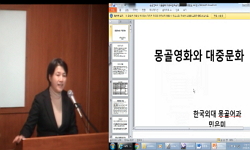Aims: Hereditary abnormalities of uridinediphosphoglucuronate-glucuronosyltransferase 1A1 (UGT1A1) gene is the major cause of unconjugated hyper-bilirubinemia. The abnormalities of UGT1A1 gene in Mongolian population remain uninvestigated. Eight in 99...
http://chineseinput.net/에서 pinyin(병음)방식으로 중국어를 변환할 수 있습니다.
변환된 중국어를 복사하여 사용하시면 됩니다.
- 中文 을 입력하시려면 zhongwen을 입력하시고 space를누르시면됩니다.
- 北京 을 입력하시려면 beijing을 입력하시고 space를 누르시면 됩니다.
The Major Changes of Gilbert’s Syndrome and UGT1A1 Gene Abnormalities in Mongolians Are Western Type = The Major Changes of Gilbert’s Syndrome and UGT1A1 Gene Abnormalities in Mongolians Are Western Type
한글로보기https://www.riss.kr/link?id=A101962870
- 저자
- 발행기관
- 학술지명
- 권호사항
-
발행연도
2016
-
작성언어
-
- 주제어
-
KDC
500
-
자료형태
학술저널
-
수록면
131-131(1쪽)
- 제공처
-
0
상세조회 -
0
다운로드
부가정보
다국어 초록 (Multilingual Abstract)
Aims: Hereditary abnormalities of uridinediphosphoglucuronate-glucuronosyltransferase 1A1 (UGT1A1) gene is the major cause of unconjugated hyper-bilirubinemia. The abnormalities of UGT1A1 gene in Mongolian population remain uninvestigated. Eight in 99 consecutive Mongolian adults developed indirect hyperbilirubinemia. We therefore studied Mongolian patients for GS and UGT1A1 abnormalities. Methods: Between 2007 and 2014, ninety-nine consecutive Mongolian adult patients of chronic liver disease from the Department of Gastroenterology, Mongolian National University of Medical Sciences were studied. Eight (8.1%) of them developed indirect hyperbilirubinemia. All patients were tests for blood chemistries, hemoglobin, international normalized ratio (INR), mean corpuscular volume (MCV), glucose-6-phosphate dehydrogenase (G6PD) levels as well as UGT1A1 genetic abnormalities. We genotyped the UGT1A1 gene for the A(TA)6TAA (6) or A(TA)7TAA (7) promoter variant, and the coding region for nucleotide mutations (nt)-211 G to A, nt-686 C to A, nt-1091 C to T and nt-1456 T to G. Results: Among the eight patients that developed indirect hyperbilirubinemia, six were male and two were female. All patients had hemoglobin, INR, MCV and G6PD levels within normal limit and we excluded possibility of anemia, decompensated liver function, thalassemia and G6PD deficiency. Our data confirms two variants of the UGT1A1 gene among the Mongolian patients. Two case were homozygous for nt-211G>A mutation, two case heterozygous for 6/7 promoter variants and nt-211G>A mutation, whereas four case were typical GS with homozygous 7/7 promoter genotype with no mutation in the coding region None of our Mongolian patients had mutations at nt-686, nt-1091 or nt-1456. Conclusions: Our pilot results show that GS and UGT1A1 abnormalities are common in Mongolians. Prevalence of the UGT1A1 promoter abnormalities in Mongolians are similar to the Western population; whereas the high prevalence of nt-211G>A variant is similar to the Asians. Further studies with much larger number of patients are necessary to confirm the genetic status of GS and UGT1A1 variants in Mongolians.
동일학술지(권/호) 다른 논문
-
- 대한간학회
- ( Sae Kyung Joo )
- 2016
-
- 대한간학회
- ( Mark Sulkowski )
- 2016
-
- 대한간학회
- ( Sang Bong Ahn )
- 2016
-
- 대한간학회
- ( Sae Kyung Joo )
- 2016




 KISS
KISS


